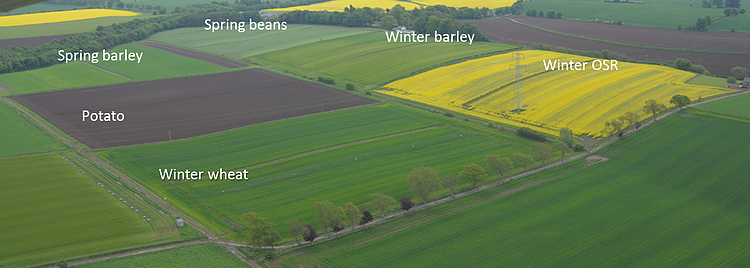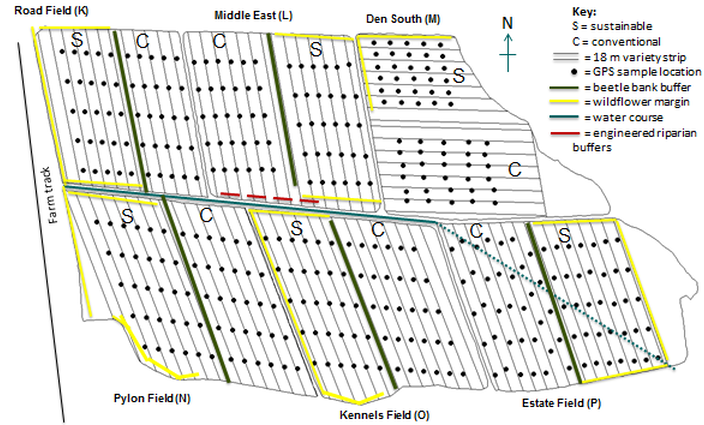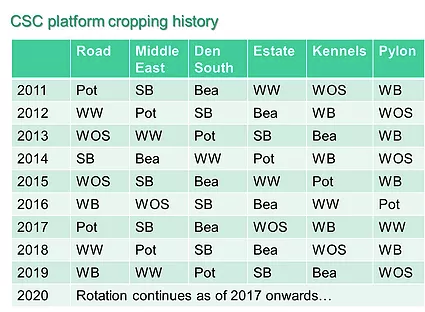
Ariel view of CSC site at Balruddery
Each half field (assigned to either conventional or integrated management) is planted with
two crop varieties to test varietal response to change in management.
An additional 18 m strip along each edge of each half field is available for plot-scale
experiments.
Across the whole site there are a total of 360 permanent GPS locations at which key arable
systems indicators are monitored throughout each growing season.

Site maps are available to download in PDF format for:
2016/17,
2015/16,
2014/15,
2013/14,
2012/13 and
2011/12.
|
